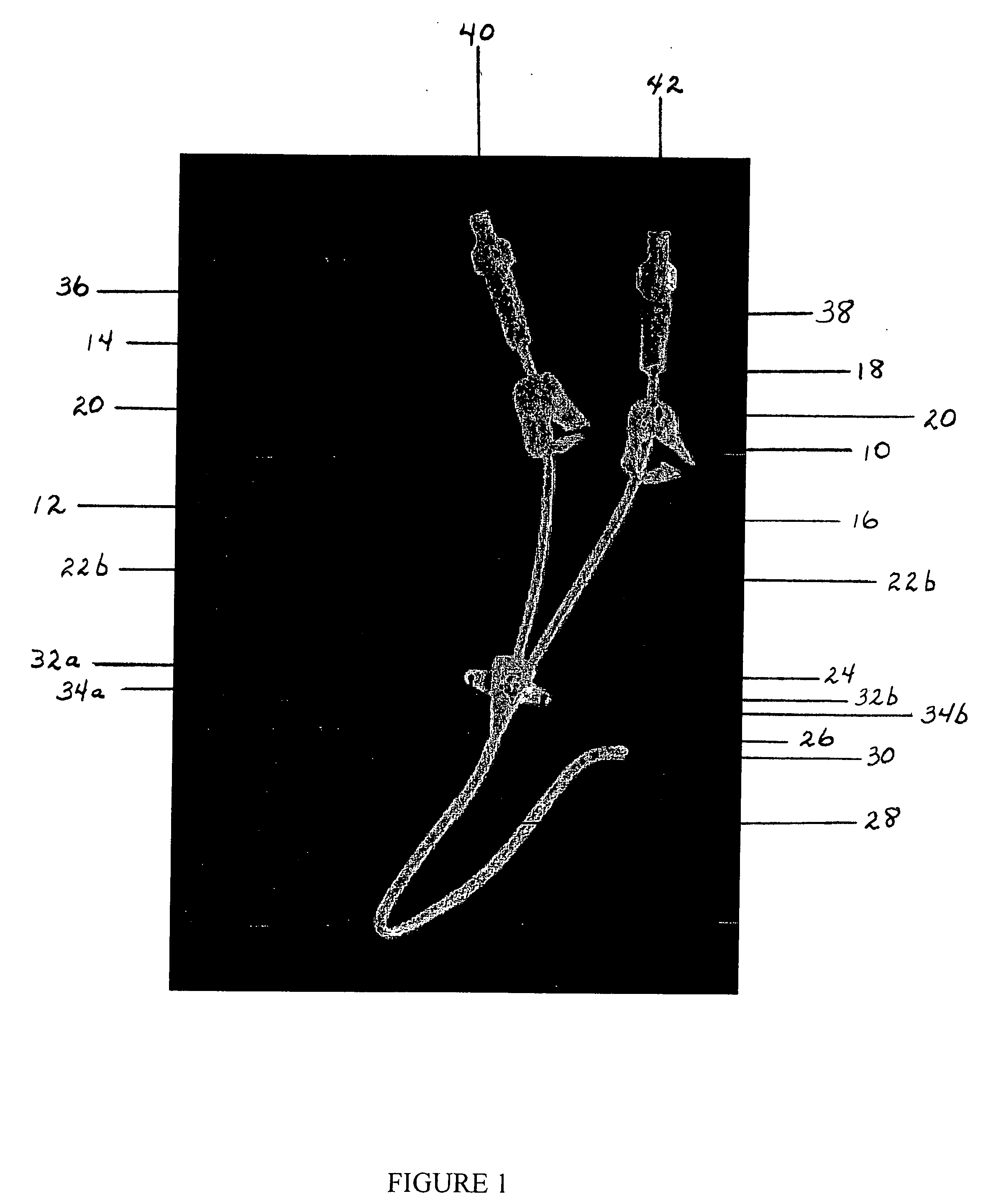Method and apparatus for treating bacterial infections in devices
- Summary
- Abstract
- Description
- Claims
- Application Information
AI Technical Summary
Benefits of technology
Problems solved by technology
Method used
Image
Examples
example
[0033] As an example to demonstrate the use of a RIP-impregnated CVC to enhance the efficacy of the antibiotic to salvage the CVC in one possible embodiment of the instant invention, we present the following example.
Materials and Methods
[0034] Organisms: The inventors chose the S. aureus strain Smith diffuse (SD). This is a highly encapsulated, slime producing strain with exopolysaccharides which are antigenically identical to many clinical S. aureus strains tested.
[0035] Antibiotics: While any antibiotic, produced synthetically or by an organism, which has the capacity to inhibit the growth of or to kill other microorganisms could be used, including, for example, daptomycin, in this embodiment of the instant invention, the inventors chose the following antibiotics to combine with RIP to demonstrate the synergistic effect: Vancomycin, ciprofloxacin and imipenem. The inventors diluted these antibiotics in accordance with manufacturers′ recommendations. Solutions were made fresh o...
PUM
| Property | Measurement | Unit |
|---|---|---|
| Time | aaaaa | aaaaa |
| Time | aaaaa | aaaaa |
| Antimicrobial properties | aaaaa | aaaaa |
Abstract
Description
Claims
Application Information
 Login to View More
Login to View More - R&D
- Intellectual Property
- Life Sciences
- Materials
- Tech Scout
- Unparalleled Data Quality
- Higher Quality Content
- 60% Fewer Hallucinations
Browse by: Latest US Patents, China's latest patents, Technical Efficacy Thesaurus, Application Domain, Technology Topic, Popular Technical Reports.
© 2025 PatSnap. All rights reserved.Legal|Privacy policy|Modern Slavery Act Transparency Statement|Sitemap|About US| Contact US: help@patsnap.com


